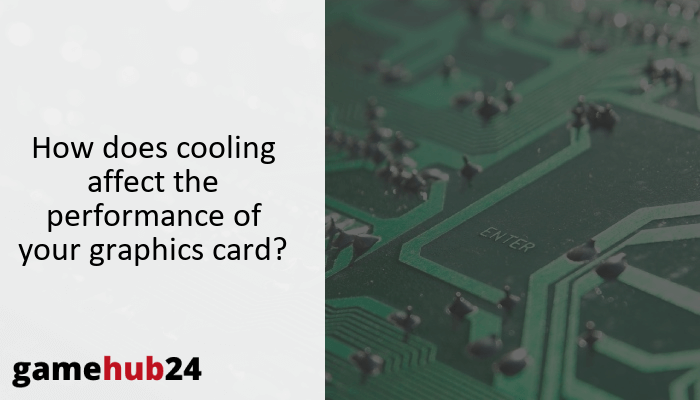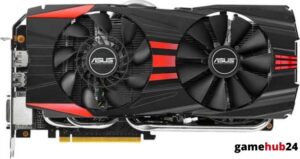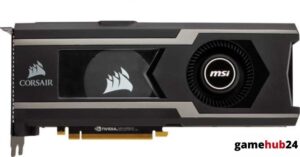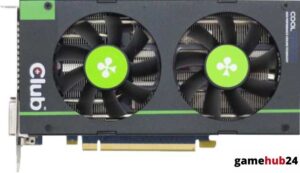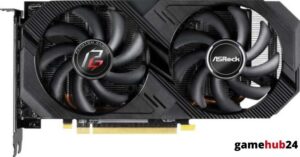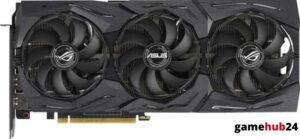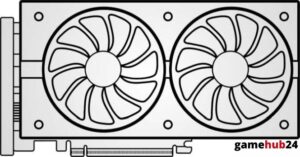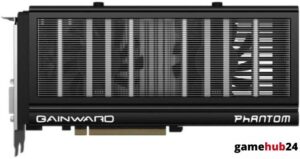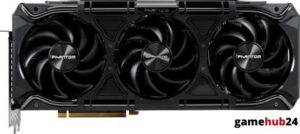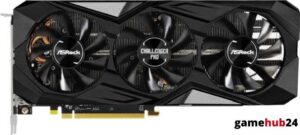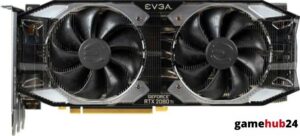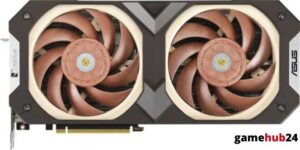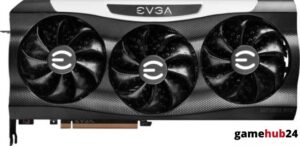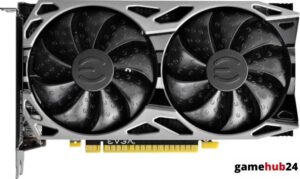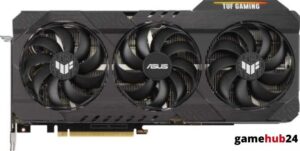Maintaining the optimal performance of your GPU is mostly dependent on the cooling of your graphics card. Maintaining the longevity and effectiveness of your graphics card can be achieved by being aware of its importance and the many cooling methods that are used.
The engine of your computer’s visual processing, graphics cards produce a lot of heat that, if not properly handled, can shorten their lifespan and degrade performance. Therefore, cooling systems are essential rather than just an add-on. They guarantee that the GPU runs at its ideal temperature, avoiding overheating and possible damage. There are several cooling techniques, such as liquid and air cooling, and each has advantages and disadvantages of its own. For high-end graphics cards, advanced cooling options including memory cooling and VRM cooling provide better performance.
- Graphics cards generate significant heat, necessitating effective cooling systems.
- Cooling systems maintain optimal GPU temperature, preventing overheating and damage.
- Various cooling methods include air cooling, liquid cooling, and advanced solutions like VRM and memory cooling.
- Each cooling method has its own advantages and disadvantages, with advanced solutions offering superior performance for high-end graphics cards.
| Cooling Component | Description | Role in GPU Cooling |
|---|---|---|
| Fan | A mechanical device that blows air over the heat sink. | Dissipates heat generated by the GPU. |
| Heat Sink | A metal structure with fins that increase its surface area. | Absorbs heat from the GPU and dissipates it into the surrounding air. |
| Thermal Paste | A material applied between the GPU and the heat sink. | Improves heat transfer from the GPU to the heat sink. |
| Heat Pipes/Vapor Chambers | Components filled with a liquid coolant that absorbs heat from the GPU. | Carries heat away from the GPU to be dissipated. |
| Water Block (Liquid Cooling) | A block of metal attached to the GPU, filled with a liquid coolant. | Absorbs heat from the GPU and carries it away to be dissipated through a radiator. |
This table provides a summary of the key components involved in GPU cooling, their descriptions, and their roles in dissipating heat from the GPU.
What is the role of cooling in a graphics card?
The Graphics Processing Unit (GPU) is a workhorse that powers your computer’s visual processing and produces a lot of heat. If this heat is not well controlled, performance may suffer or the GPU may potentially be damaged. The purpose of a graphics card’s cooling system is to disperse this heat and keep the GPU at the ideal temperature for optimal performance. This is essential for keeping your graphics card from overheating, extending its lifespan, and preserving top performance when doing demanding tasks like gaming or video processing.
Why is cooling important for a graphics card?
A graphics card that is not properly cooled can overheat very quickly, resulting in a variety of issues. The GPU may reduce performance in order to prevent damage from overheating, which will lower frame rates and overall performance. In extreme circumstances, the GPU may even sustain irreversible damage. For this reason, cooling is not an option but rather a need for any graphics card. It makes sure your GPU can run as efficiently as possible without running the danger of overheating and possibly breaking down.
How does heat affect the GPU performance?
Any electronic device’s worst enemy is heat, and GPUs are no different. Thermal throttling is a phenomenon that can occur when a GPU overheats. As a safety precaution, the GPU will purposefully reduce its clock speed to produce less heat, however performance may suffer as a result. In severe situations, the GPU may fully power down to avoid damage due to overheating. Therefore, to retain the best possible GPU performance, proper heat management is essential.
The GPU is the fundamental component of your computer’s visual processing, did you know that? It produces a lot of heat, which might harm the GPU or cause performance to drop if it is not adequately controlled. For this reason, cooling mechanisms are essential to any graphics card. They make sure there’s no chance of overheating and any damage, so your GPU can run at peak efficiency.
What is thermal throttling and how does it relate to GPU cooling?
GPUs use thermal throttling as a safety feature to keep them from overheating. The GPU will automatically lower its clock speed to lessen heat generation if it senses that its temperature is rising to unsafe levels. This results in a decrease in performance but also shields the GPU from harm. When GPU cooling is done well, thermal throttling is avoided, allowing the GPU to operate at peak efficiency and clock speed.
What are the types of cooling systems for graphics cards?
Graphics card cooling systems come in a variety of forms, each with pros and cons of their own. Liquid cooling and air cooling are the most popular varieties. In order to disperse heat into the surrounding air, air cooling uses fans to blow air over a heat sink that is linked to the GPU. In contrast, liquid cooling transfers the GPU’s heat to a liquid coolant, which is subsequently released through a radiator. Additionally, there are hybrid systems that incorporate aspects of liquid and air cooling.
What is the difference between air and liquid cooling systems?
Heat is dispersed from air conditioning systems using fans and heat sinks. Comparatively speaking, they are easier to install, less expensive, and simpler than liquid cooling systems. They might not be as successful, though, in cooling high-performance GPUs. Heat from the GPU is absorbed by a liquid coolant in liquid cooling systems, and the heat is then released through a radiator. Compared to air cooling systems, they can be more complex, costly, and require more maintenance even if they can be more effective at cooling.
What is active cooling and passive cooling?
Cooling systems that actively remove heat from the GPU by using mechanical parts like fans or pumps are referred to as active cooling systems. The most popular kind of cooling found in graphics cards is this one. Conversely, passive cooling uses the heat’s natural flow to disperse away from the GPU. Large heat sinks are frequently used to achieve this. Passive cooling is often less effective at cooling high-performance GPUs, even though it can be quieter and require less maintenance than active cooling.
Keep in mind that there are various kinds of cooling solutions for your GPU while making your decision. Liquid cooling employs a liquid coolant to absorb heat from the GPU, whereas air cooling uses fans to force air over a heat sink that is linked to the GPU. Additionally, there are hybrid systems that incorporate parts of both. Select the option that best fits your demands and budget as each has pros and cons of its own.
How do heat pipes and vapor chambers work in GPU cooling?
In GPU cooling systems, heat pipes and vapor chambers are two frequently utilized parts. Heat pipes are voids in the tube that are filled with a liquid coolant, which removes and dissipates heat from the GPU. Similar concepts underlie the operation of vapor chambers, which substitute a sealed chamber with a liquid coolant in place of a single tube. The coolant releases heat by condensing at the top of the chamber after vaporizing and absorbing heat. Repetition of this cycle effectively dissipates heat from the GPU.
What are the components of a graphics card cooling system?
Usually, a graphics card cooling system is made up of multiple essential parts. These consist of thermal paste, a heat sink, and a fan or fans. The heat sink is a metal structure with fins that enhance its surface area to better dissipate heat. The fan blows air over it. To enhance heat transfer, a substance called thermal paste is put in between the GPU and the heat sink. To improve cooling even more, certain high-performance graphics cards could come with extra parts like heat pipes or vapor chambers.
What is the function of a GPU fan in cooling?
An important part of the cooling process is the GPU fan. It assists in dispersing the heat produced by the GPU by forcing air over the heat sink. In order to balance noise levels and cooling performance, the fan speed is frequently changeable. For better cooling, some high-performance graphics cards could include several fans. It’s crucial to remember that fans are a crucial part of the cooling system, but in order to properly cool the GPU, they must cooperate with other parts like heat sinks and thermal paste.
How does a heat sink contribute to GPU cooling?
An essential part of any GPU cooling solution is the heat sink. It is a metal construction with fins to enhance surface area, usually composed of copper or aluminum. The purpose of the heat sink, which is affixed to the GPU, is to disperse the heat the GPU produces into the ambient air. The heat sink dissipates heat more efficiently the larger its surface area. But the heat sink’s construction and composition can also significantly affect how well it cools.
What is the role of thermal paste in graphics card cooling?
To enhance heat transfer, a substance called thermal paste, sometimes referred to as thermal compound, is put in between the GPU and the heat sink. It ensures that heat may be efficiently transmitted from the GPU to the heat sink by filling up any spaces or imperfections between the two surfaces. The cooling system’s efficiency would be drastically decreased in the absence of thermal paste. It is noteworthy that although thermal paste is essential for cooling, it needs to be applied properly. The efficiency of cooling can be adversely affected by too much or too little.
How can you enhance the cooling of your graphics card?
There are other methods for improving your graphics card’s cooling. Overclocking is a popular technique that can boost your GPU’s performance but also increases heat production. Consequently, when overclocking, efficient cooling is essential. Additional techniques include switching to a more effective cooling system, like a liquid cooling system, or utilizing cooling pads or PC case fans to increase air circulation. In certain instances, merely clearing the dust from your computer will greatly enhance its cooling capabilities.
How does overclocking affect GPU temperature and cooling needs?
The process of overclocking involves raising your GPU’s clock speed over its factory settings in order to get better performance. But there’s a price for this improved performance: more heat. The GPU needs more efficient cooling to avoid overheating because it produces more heat when it works harder. Consequently, you should improve your cooling system to accommodate the higher heat load if you intend to overclock your GPU.
What is the purpose of cooling pads and PC case fans?
Two popular methods to enhance your graphics card’s cooling are cooling pads and PC case fans. Cooling pads are devices that reside beneath your computer and remove heat by using fans to force air onto the case’s bottom. The GPU and other components can stay cool with the aid of PC case fans, which are mounted inside the computer case and enhance air circulation. These two techniques, especially when combined with other cooling options, can improve your graphics card’s cooling capabilities.
How can a CPU cooler and radiator improve GPU cooling?
Enhancing GPU cooling can be significantly aided by a CPU cooler and radiator. By absorbing and dispersing CPU heat, the CPU cooler lowers the total heat load within the computer casing. Additionally, this may keep the GPU cooler. Heat absorbed by the liquid coolant from the GPU is dispersed by a radiator, which is frequently employed in liquid cooling systems. A CPU cooler and radiator can greatly improve the cooling of your graphics card by efficiently draining heat from the GPU and the computer casing.
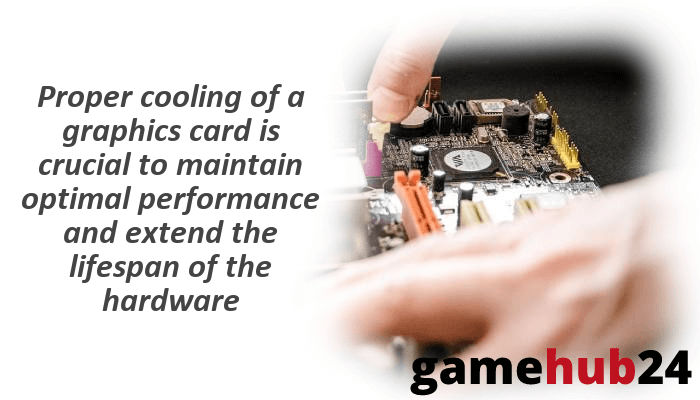
What are the advanced cooling solutions for graphics cards?
There are various cutting-edge cooling options accessible for individuals looking for the best possible cooling performance. These include memory cooling and voltage regulator module (VRM) cooling, which cool the graphics card’s memory chips and VRM in addition to the GPU. Water blocks are another option; they are utilized in liquid cooling systems to absorb GPU heat. Lastly, compared to conventional thermal paste, improved thermal compounds can offer better heat transfer between the GPU and the heat sink.
What is VRM cooling and memory cooling?
Advanced cooling options like RAM and VRM cooling concentrate on particular graphics card components. One part that controls the voltage applied to the GPU is the Voltage Regulator Module (VRM). It can produce a lot of heat, especially when used with powerful graphics cards. Heat sinks and fans are examples of VRM cooling solutions that can help maintain the VRM’s coolness and guarantee consistent power delivery to the GPU. In contrast, memory cooling focuses on the graphics card’s memory chips, which are also capable of producing heat. Enhancing the overall performance and stability of a graphics card can be achieved by cooling these components.
How does a water block work in a liquid cooling system?
An essential part of a liquid cooling system is a water block. It is a metal block that is fastened to the GPU; it is frequently made of copper or aluminum. Liquid coolant is housed inside the hollow water block. The coolant collects and transfers the heat produced by the GPU to a radiator for dissipation. This makes it possible for the water block to efficiently cool the GPU even when it is under a lot of demand. Water blocks, on the other hand, need a pump and radiator to work and are more complicated and costly than conventional air cooling methods.
What is the importance of thermal compound in advanced cooling?
A vital part of any cooling system is thermal compound, sometimes referred to as thermal paste or thermal grease. To enhance heat transfer, it is placed in between the GPU and the water block or heat sink. up order to guarantee that heat can be transmitted from the GPU to the cooling device efficiently, the thermal compound fills up any spaces or imperfections between the two surfaces. Superior heat transfer from high-quality thermal compounds can help keep the GPU cooler and boost performance in sophisticated cooling systems.

